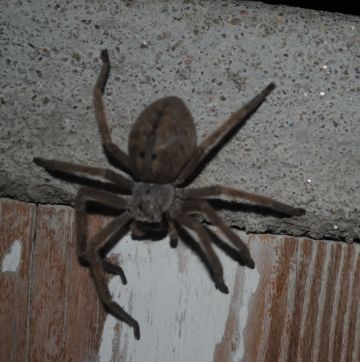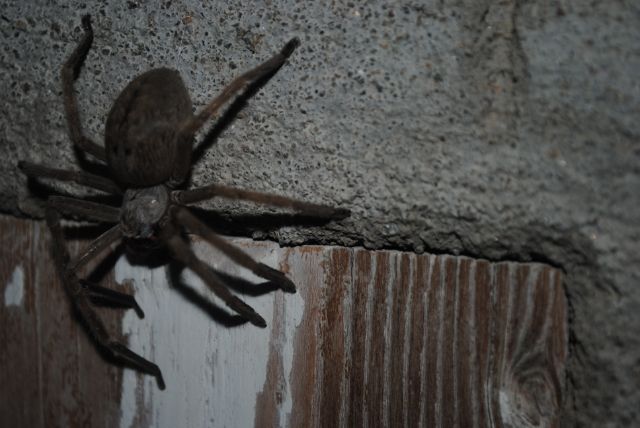Female Tarantulas pretty much don't wander. After leaving the initial birthing area (if they are not eaten) and locating their own living domain, they will stay in pretty much a 3 foot circumference of that home for the duration of their lives...the ones that wander are the males in search of mates and after mating for the first time...their bio clocks tick off about a year of life.
A male will have a small hook under the joint in the forearms. This is to thwart the raising body of the female on her hind legs to reveal her fangs in a killing attempt which allows the male to hold in those hooks her forearms in that upraised position and leave exposed her under abdomen where he takes his 'stuff' with his hind legs and places it on her abdomen in the act of impregnating her (whew that was a long sentence and no you wont find this in the porn section of the web).
Once this act is complete, the male looks for a lull in the action because as soon as he releases her forearms he needs to run like hell! She will do her best to fang him during this time...and he really wants to live for that last year to fulfill his desire to do this all over again

If you gently use a stick to raise the arm of that spider you might find the little hook and note that it is truly a male tarantula. Or....you can put your index finger on the back of its head behind the eyes and gently pin it while using your thumb and middle finger between the back 2 legs on each side to grasp it and pick it up, turn it over and look at the forearms for the hooks. I use to do this with my female red legged that was almost the size of my hand when visiting classrooms to speak on these affectionate spiders...she used to love to sit on my tv because it was so warm. I usually even found her there even when it wasn't on while I was gone.
P.S. If you want to give or purchase one of these for your Grandson (great way to get back at your kids through their children) make sure those hooks aren't there...or the spider will probably only live a short time and really bum the kid out. There is no way to know if the males have mated when you see them in the store or catch them out in the wild.





